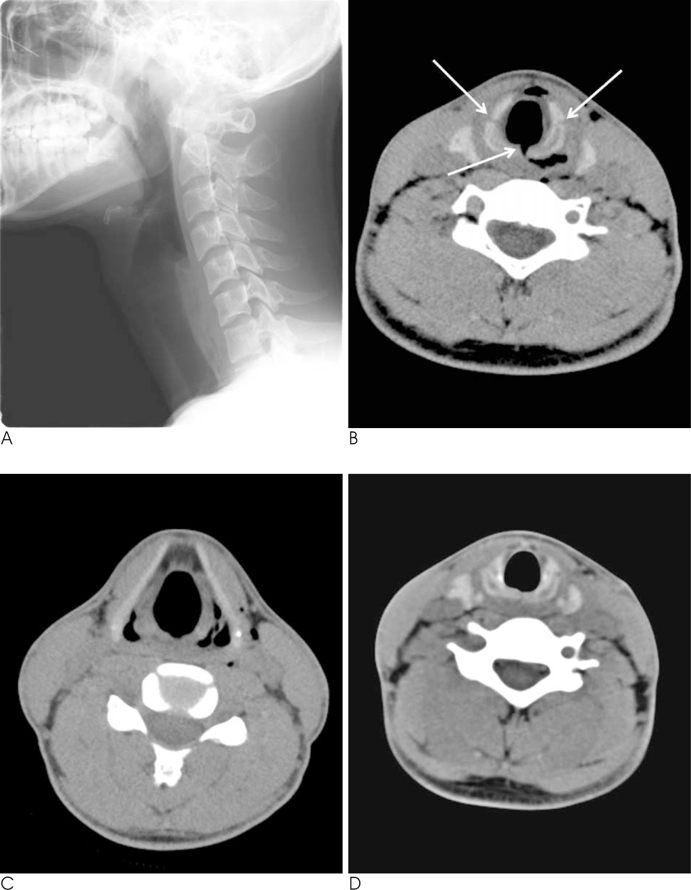J Korean Soc Radiol.
2010 Oct;63(4):319-321.
Isolated Multiple Fragmented Cricoid Fracture Associated with External Blunt Neck Trauma: A Case Report
- Affiliations
-
- 1Department of Radiology, Ilsan Paik Hospital, Inje University School of Medicine, Korea. hoonbeer@hanmail.net
- 2Department of General Thoracic Surgery, Ilsan Paik Hospital, Inje University School of Medicine, Korea.
Abstract
- Blunt laryngeal trauma is a relatively uncommon but possibly life-threatening injury. An isolated cricoid fracture associated with blunt trauma is rare. We report a case of an isolated multiple fragmented cricoid cartilage fracture that developed in a 20-year-old man after a blunt neck trauma that occurred during a baseball game and was diagnosed by 64-slice multidetector computed tomography (MDCT).
MeSH Terms
Figure
Reference
-
1. Gussak GS, Jurkovich GJ, Leuterman A. Laryngotracheal trauma: a protocol approach to a rare injury. Laryngoscope. 1986; 96:660–665.2. Fuhrman GM, Stieg FH, Buerk CA. Blunt laryngeal trauma: classification and management protocol. J Trauma. 1990; 30:87–92.3. Ganzel TM, Mumford LA. Diagnosis of acute laryngeal trauma. Am J Surg. 1989; 55:303–306.4. Fitzsimons MG, Peralta R, Hurford W. Cricoid fracture after physical assault. J Trauma. 2005; 95:1237–1238.5. Heath KJ, Palmer M, Fletcher SJ. Fracture of the cricoid cartilage after Sellick's manoeuvre. Br J Anaesth. 1996; 76:877–888.6. American College of Surgeons Committee on trauma. Advanced trauma life support for doctors. 7th ed. Chicago, IL: American College of Surgeons;2004. p. 42–43.7. Meglin AJ, Beidlingmaier JF, Mirvis SE. Three-dimensional computerized tomography in the evaluation of laryngeal injury. Laryngoscope. 1991; 101:202–207.8. Schaefer SD. Primary management of laryngeal trauma. Ann Otol Rhinol Laryngol. 1982; 91:399–402.9. Oh JH, Min HS, Park TU, Lee SJ, Kim SE. Isolated cricoid fracture associated with blunt neck trauma. Emerg Med J. 2007; 24:505–506.
- Full Text Links
- Actions
-
Cited
- CITED
-
- Close
- Share
- Similar articles
-
- A Case of Isolated Multiple Cricoid Fracture Associated with Neck Trauma
- A Case of Posterior Pharyngeal Wall Perforation After Blunt Neck Trauma
- A Case of Incus Dislocation into the External Auditory Canal after Head Trauma
- Deep Neck Infection Complicated by Isolated Submandibular Gland Fracture Due to Blunt Trauma: A Case Report
- Acute Extrapericardial Tamponade Caused by Blunt Chest Trauma: 2 case reports


